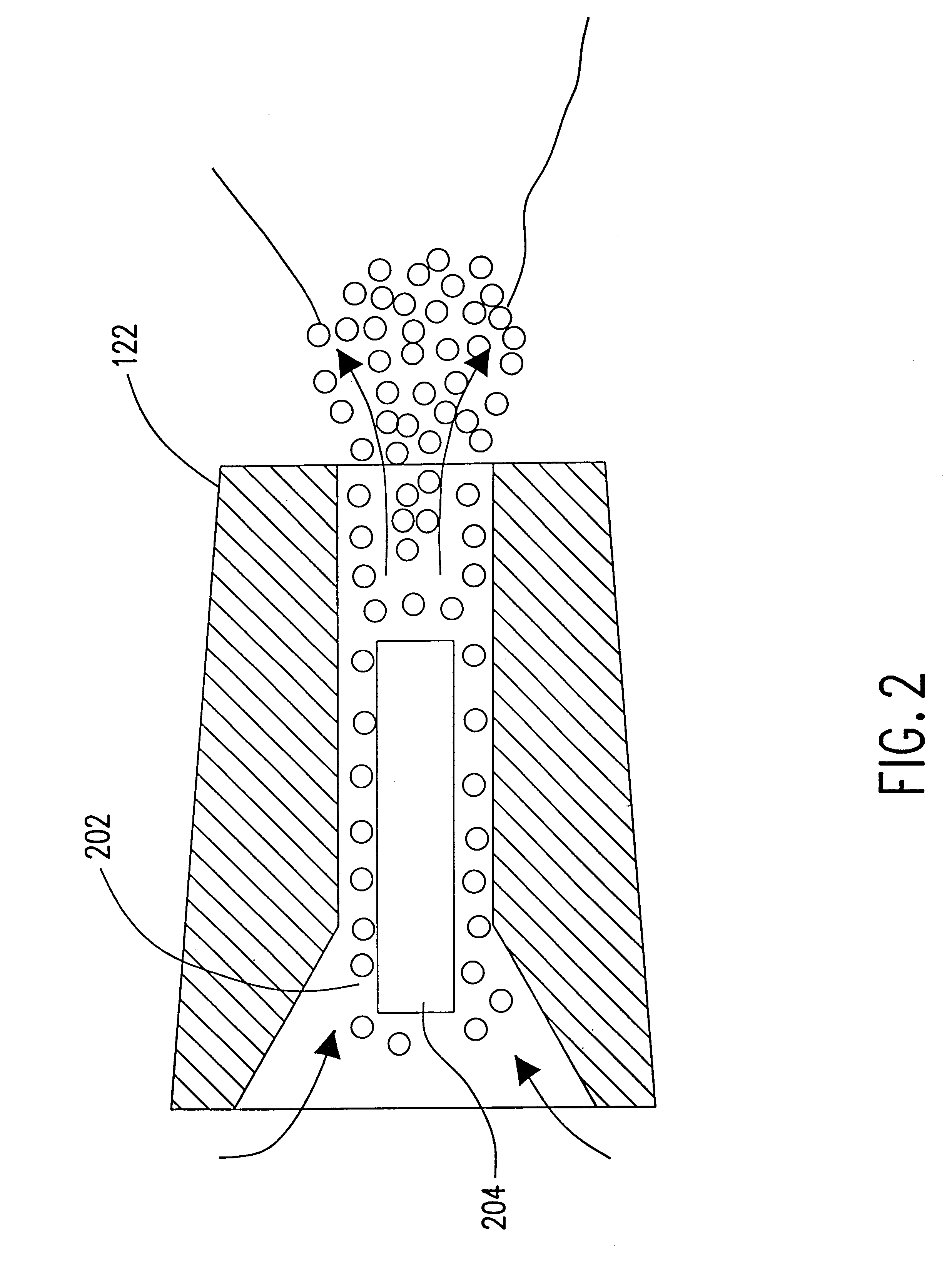Method of creating ultra-fine particles of materials using a high-pressure mill
a technology of high-pressure milling and ultra-fine particles, which is applied in the direction of grain milling, centrifuges, solid separation, etc., can solve the problems of crack bifurcation, process relatively inefficient, energy-intensive and inefficient current comminution technology
- Summary
- Abstract
- Description
- Claims
- Application Information
AI Technical Summary
Problems solved by technology
Method used
Image
Examples
first embodiment
FIG. 1 shows a high-pressure mill 100 for processing materials into ultra-fine particles. Mill 100 includes a first chamber 102, nozzle chambers 104 and 108, a second chamber 106, and a third chamber 110. In one embodiment, chambers 102, 106 and 110 each have a length (measured from inlet to outlet) in the range of 1-20 inches and a diameter in the range of 0.25-10 inches. However, it would be apparent to one skilled in the relevant art that various other sizes and configurations of chambers 102, 106 and 110 could be used to implement mill 100 of the present invention.
First chamber 102 includes an inlet 112. The material to be processed is fed into first chamber 102 via inlet 112. In this embodiment, a funnel 114 is disposed above inlet 112 to facilitate loading of the material to be processed into first chamber 102. In an alternate embodiment, inlet 112 could be connected via a port to an outlet of another similar mill, so that the particles exiting a first mill could be pumped int...
example
FIG. 8 shows a graph of particle size distribution resulting from use of the mill of the present invention for processing anthracite. In this example, the distribution marked as 802 is based on a feed size of 0.25-0.5 inches. For the distribution marked as 804, the feed size was 0.02-0.05 inches. The test mill included first chamber 102, nozzle chamber 104, second chamber 106 and third chamber 110, as described above with respect to mill 100. The nozzle for high pressure fluid jet 116 had a diameter of 0.012 inches and the primary slurry nozzle of nozzle chamber 104 was 0.045 inches. The fluid pressure for jet 116 used for the particles shown in distribution 802 was 40,000 psi, and the fluid pressure for jet 116 used for the particles shown in distribution 804 was 30,000 psi. Collider 128 in third chamber 110 was in a fully open position.
As shown in the graphs of FIG. 8, for a feed size of 0.25-0.5 inches, the mill of the present invention comminuted approximately 90% of these start...
PUM
| Property | Measurement | Unit |
|---|---|---|
| size | aaaaa | aaaaa |
| size | aaaaa | aaaaa |
| pressure | aaaaa | aaaaa |
Abstract
Description
Claims
Application Information
 Login to View More
Login to View More - R&D
- Intellectual Property
- Life Sciences
- Materials
- Tech Scout
- Unparalleled Data Quality
- Higher Quality Content
- 60% Fewer Hallucinations
Browse by: Latest US Patents, China's latest patents, Technical Efficacy Thesaurus, Application Domain, Technology Topic, Popular Technical Reports.
© 2025 PatSnap. All rights reserved.Legal|Privacy policy|Modern Slavery Act Transparency Statement|Sitemap|About US| Contact US: help@patsnap.com



